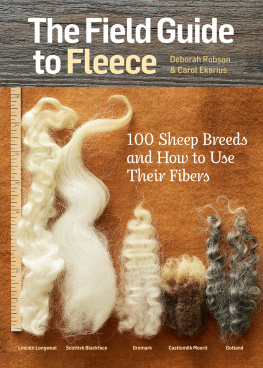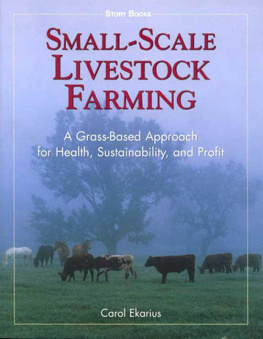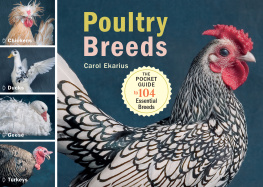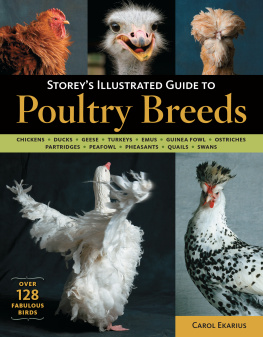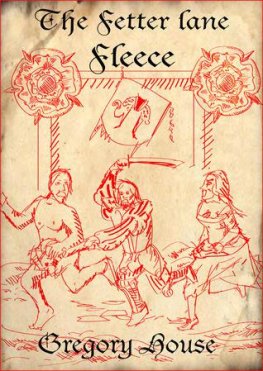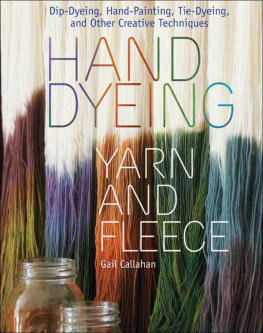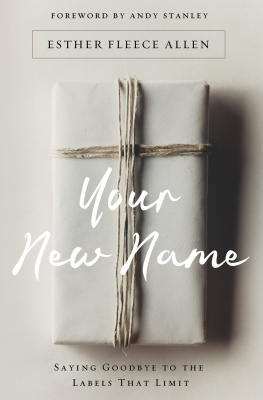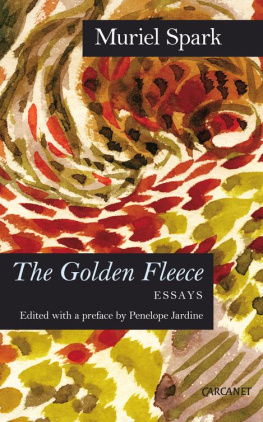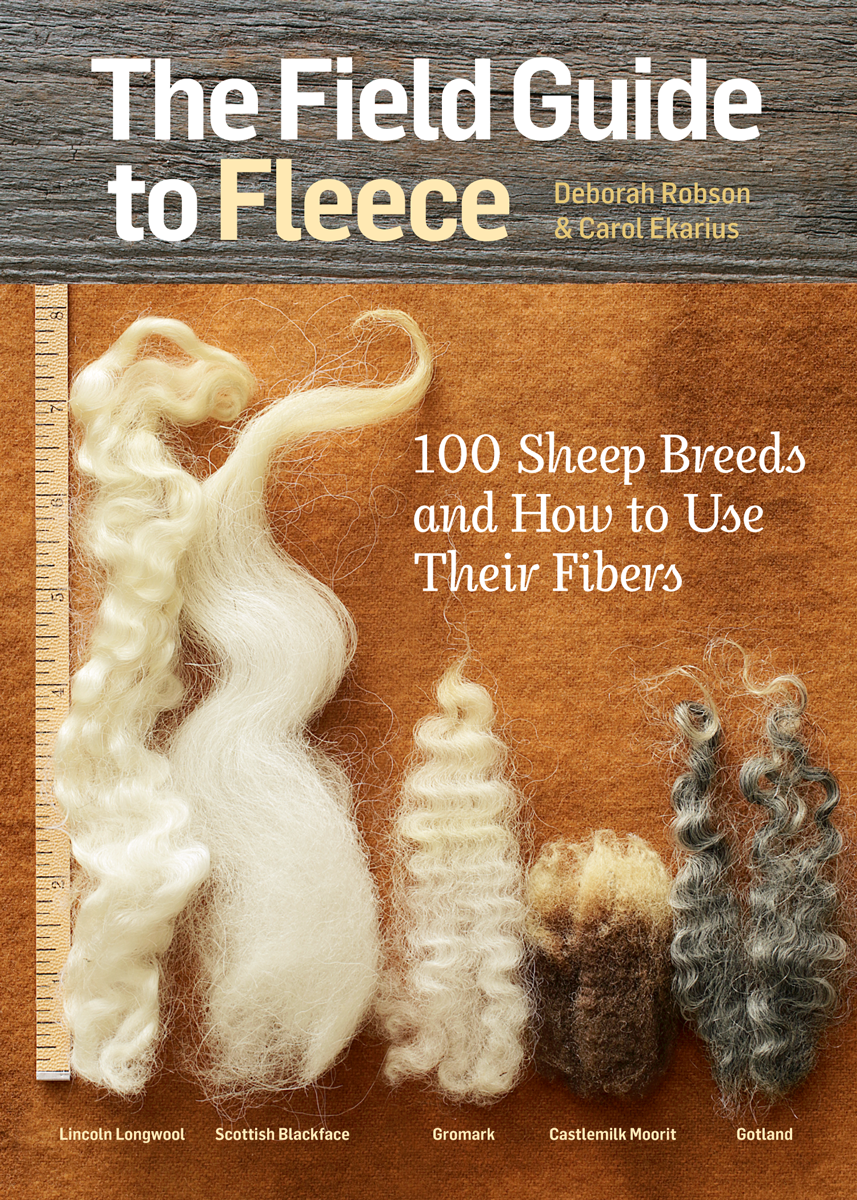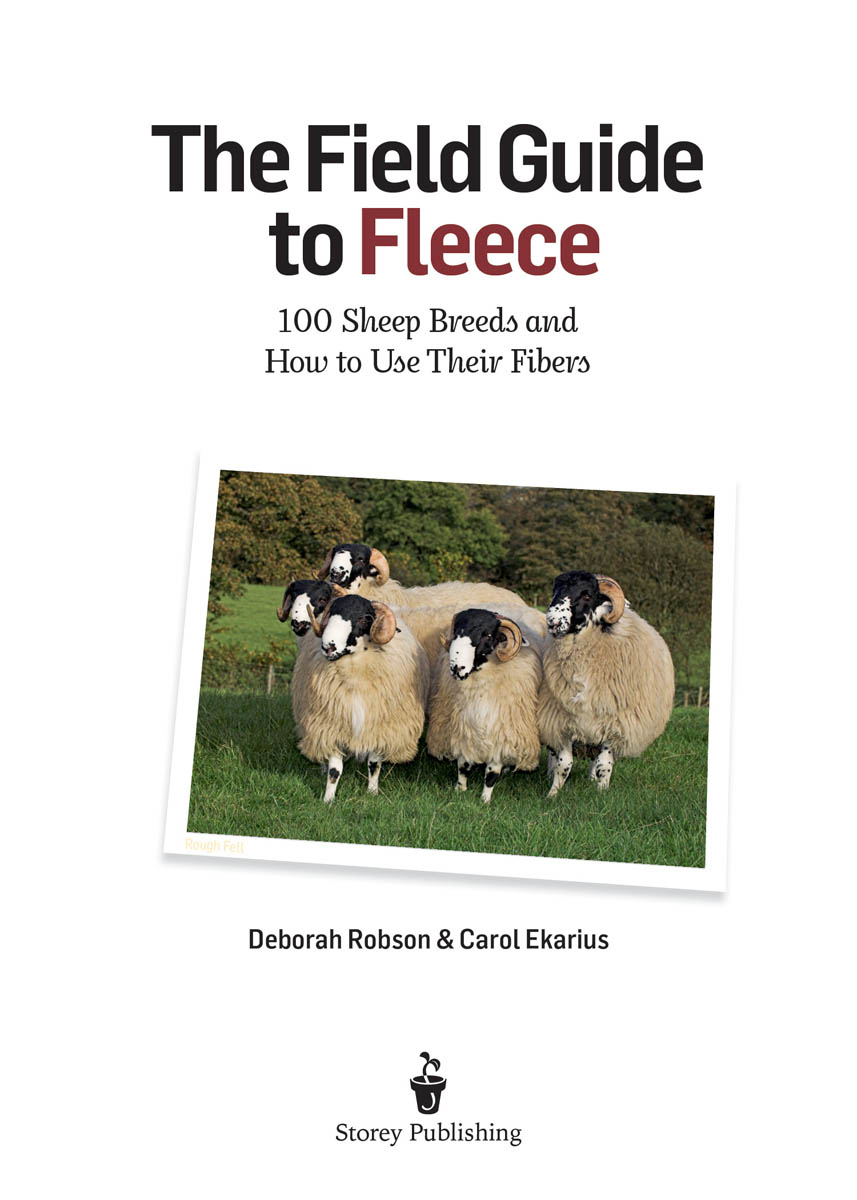We love wool. We love sheep. Thats why we wrote The Fleece & Fiber Sourcebook. Many readers have asked for a smaller book that they could carry with them or give to friends who are new to fiber arts. We listened!
Why are we so fond of wool? Well, first, it is all natural. Its also surprisingly diverse and exceptionally practical. It provides warmth in cold climates, while it also makes a great cool fabric for warm weather. Desert-living people from Navajos to Bedouins have long histories with sheep and wool.
About the Breed Notes
All of the locks shown in the photographs in the pages that follow have been washed but not otherwise manipulated. Quite a few do not match the length ranges specified for a years growth. Wool is a natural material, and you will sometimes encounter out-of-spec measurements, as we did. The shearing may have been done a little early. The shearer may have left a little wool in place because of the weather or to avoid nicking the sheep. Or the animal just may naturally grow a little less wool than the standard.
Conservation Breed. A breed whose population may be at risk for any of a number of reasons. Breeds noted as critical in this regard have very low numbers.
Field notes. Use this section to track wools youve bought, shepherds you want to contact, and similar details.
Not all wools are created equal! There are more than a thousand breeds of sheep, each with its own intrinsic wool characteristics. Some grow negligible wool, while others have superlong fleeces. Some fine wools can be worn comfortably by babies, while strong wools can last for centuries in heavily used rugs. Some wools felt readily, while others wont felt at all. Some are springy, while others are dense and supple. For us, learning about these diversities of sheep and experimenting with their wools is a great adventure.
Fiber characteristics vary widely not only between breeds but also within breeds, and sometimes even throughout an individual fleece. Wool changes with an animals age, health, and environmental circumstances. A lambs first fleece will be its finest and softest. A sheep that was sick or subjected to other stress may grow a fleece with weak spots. The next year that same animal could grow strong and beautiful fiber. Every fleece has distinct, individual qualities.
Wool comes in many natural colors, but it can also be dyed. White wool is the usual choice for dyeing, while overdyeing naturally colored wools can create lovely, nuanced colors. Wools from different breeds take up dyes differently. Dyeing offers infinite possibilities!
Learning What a Fiber Can Tell You
When you are learning to tell one wool from another, consider its crimp, fiber length, and fiber diameter, and look at the types and mix of fibers in the fleece.
Crimp. Crimp, which consists of the natural kinks or waves in individual fibers, forms as those fibers grow; it is permanent. Crimp can be tight and well organized, or loose and disorganized. The crimpier the wool, the more elasticity it has, so crimpy wools make great socks or other items that need to stretch and rebound. Wools with less crimp drape elegantly.
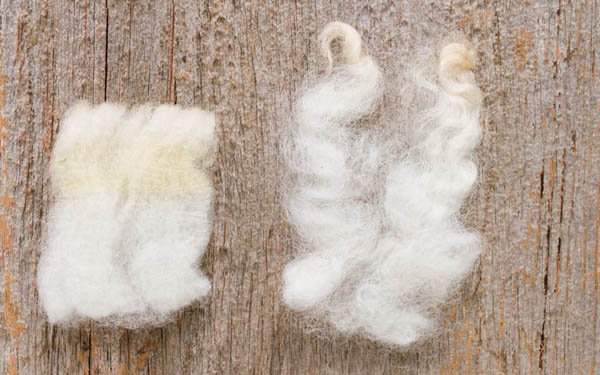
High crimp (left), Montadale; low crimp (right), Llanwenog
Fiber length. Our estimates of fiber lengths represent common annual growth. Many fleeces (even in our sample photos!) fall outside those ranges.
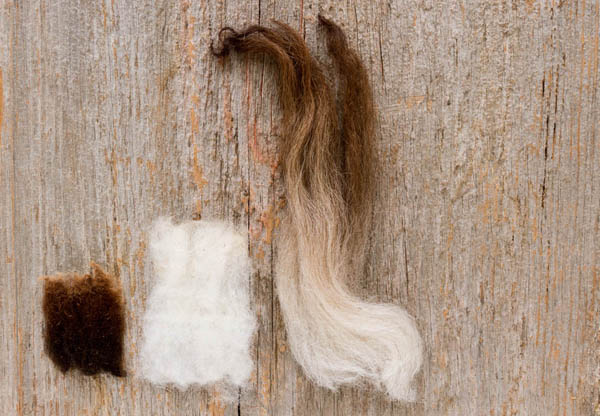
Different fiber lengths (left to right): Santa Cruz, Norfolk Horn, American Karakul
Fiber diameter. Historic grading approaches, like the Bradford Count and Blood Count, were based on the educated fingers and eyes of trained evaluators. Technology has allowed us to report fiber diameters based on micron counts. A micron is a measurement equal to one-millionth of one meter. An interesting thing about micron counts is that two fibers can report the same micron count, yet feel different in your hand. Think of it as two pieces of paper that weigh the same, but one is slick magazine-type paper and the other a natural rice paper: you know the difference as soon as you feel them, even if they weigh the same. And trained or not, our sense of touch is still one of our best guides to fiber quality.
Single-coated; double-coated. A fleece can be single-coated (containing only wool); double-coated (containing two coats, a coarse outercoat and a fine undercoat); or composed of three types of fibers (add in kemp).
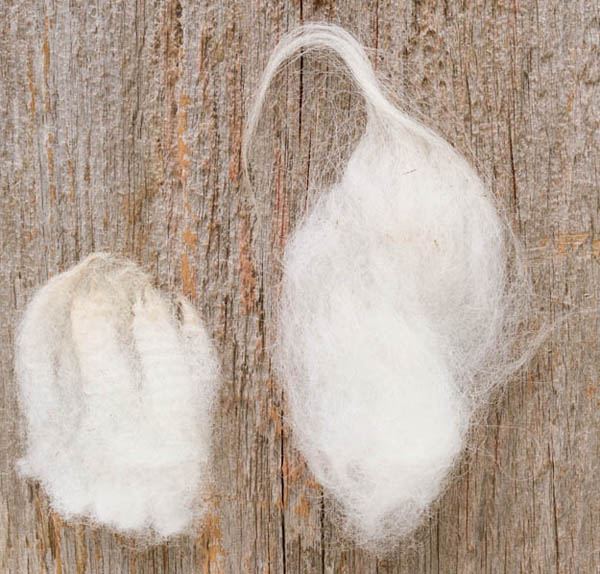
Single-coated fleece (left), Hill Radnor; double-coated fleece (right), Navajo Churro
Wool; hair; kemp. The term wool can apply to an entire fleece, but it also refers to a specific type of fiber within a fleece. Wool fibers are relatively fine, and have crimp and elasticity; even coarse wool fibers are much finer than hair fibers. Hair fibers are straighter, smooth, strong, and inelastic. Kemp fibers are coarse, brittle, and almost always shorter than the other fibers. Dye hides in the hollow centers of kemp, a trait that is used in producing true tweeds.
So, with this brief intro, we wish you well as you explore the wonderful world of wool and sheep!
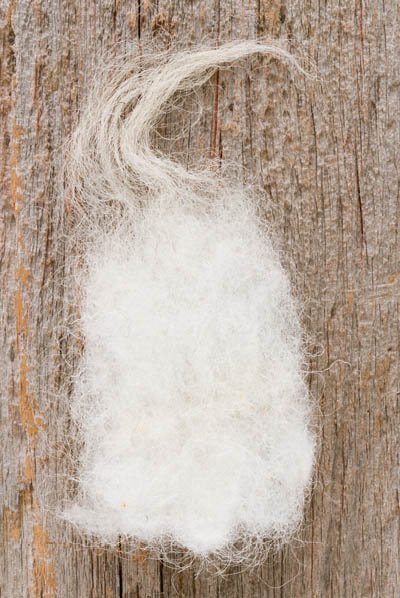
A fleece that contains hair (the longest fibers), wool (most of the fibers), and kemp (short, brittle fibers), Swaledale
Wool Allergies?
Recently I overheard a woman at a fiber event saying to a friend, Oh, I cant wear wool. I have a wool allergy.
I swung around and asked, Are you allergic to your hair?
She hesitated a second, then said that no, she wasnt. I started to explain that wool is chemically the same as hair: The proteins and amino acids that form our hair, skin, and fingernails are the same as those in wool. I then elaborated: People may truly be allergic to the lanolin naturally found in wool (though wool can be cleaned to where lanolin is practically nonexistent); some are allergic to plant material on raw fleece; and some are allergic to chemicals used in growing or processing wool. However, almost all people who say they are allergic to wool are not.
They do experience real discomfort! Yet the cause is stiff fiber ends that stick out from the yarn and irritate the skin. Yes, it causes redness and feels bad. This occurs mostly with fibers that have diameters greater than about 30 microns. Most fibers below 30 microns, such as those produced by Merinos, Rambouillets, or other fine-wool sheep, dont scratch. Every individual human has a different level of sensitivity, and some fine fibers are more flexible than others, but almost anyone can find wools to wear comfortably. Wool is too wonderful to miss out on because of a misconception. If youre seriously doubtful, check out wools with fiber diameters between 18 and 23 microns. I pointed the woman to a breeder who was selling Rambouillet yarn a couple of stalls down, and she promised to buy a skein and try it.

